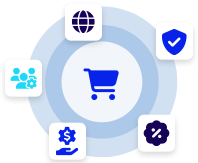In software development, an artifact refers to any by-product produced during the software creation process, encompassing everything from source code to databases, scripts, and documentation.
Artifacts are a natural part of building software applications, serving as critical building blocks that support developers, testers, and operations teams throughout the project lifecycle. Whether created for planning, coding, testing, or deployment, each artifact provides essential information, tools, or frameworks to help ensure software quality and traceability.
Artifacts are central in both traditional and modern software development, including methodologies like DevOps, where continuous integration and deployment demand that each artifact is trackable and available in a repository. By storing artifacts in a repository, teams can maintain a clear record of all elements created or modified over the software lifecycle, aiding in efficient version control and collaboration.
Types of Software Artifacts
Artifacts come in many forms, depending on the phase and purpose within the development cycle. Some of the most common types include:
- Source Code: The backbone of any application, source code is the primary artifact that developers create and continuously refine throughout a project. Every piece of code contributes to the application’s functionality, whether it’s written in Java, Python, or another language.
- Data Models and Databases: Data models describe how information is organized and interact in the application, while databases are used to store this information. These artifacts are vital for applications that depend on data-driven operations, as they define how the software will access, store, and manipulate data.
- Scripts: These are specialized artifacts used for various automated tasks, such as setting up environments, running tests, or deploying software. Scripts are common in DevOps, as they enable automated, repeatable processes that save time and reduce human error.
- Metadata: This describes information about other artifacts, including who created them, when they were last modified, and their intended use. Metadata helps manage artifacts within a repository, offering insights into their origins and relevance within the project.
Managing Artifacts in a Repository
Artifacts are stored in repositories to ensure easy access, organization, and version control. Repositories, like Git or Nexus, store artifacts in a central location, allowing developers and system admins to share, access, and modify them as needed. In DevOps, these repositories play a crucial role in automating deployments and ensuring that every build version is consistent and reliable.
For instance, when a developer pushes new source code or updates a data model, the repository captures these changes as new artifacts, maintaining a record for future reference. This process not only supports better collaboration but also facilitates troubleshooting by keeping track of all modifications. Artifacts and repositories thus work hand-in-hand to streamline workflows and maintain a high standard of quality in software projects.













